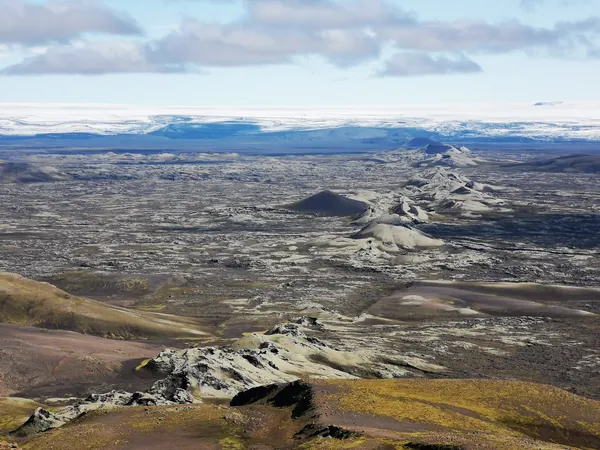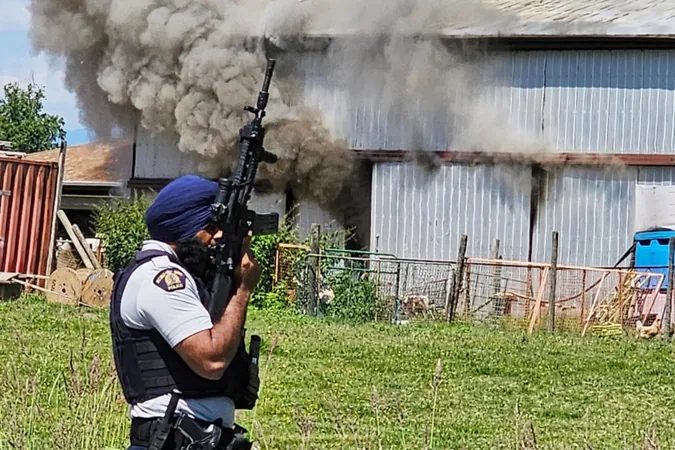
Tiny Tremors, Huge Impacts: How Small Earthquakes Shape Major Faults
2025-05-14
Author: William
When we think of earthquakes, we often picture the earth violently shaking beneath our feet. However, deep underground, quiet yet powerful movements occur along fault lines. These subtle shifts, known as tremors, may not make headlines or rattle buildings, but they hold the key to understanding the behavior of major earthquakes.
A groundbreaking study from geophysicists at UC Santa Cruz shines a light on the significance of these tremors, revealing how they influence the stress buildup on dangerous fault lines that lead to catastrophic quakes. Led by researcher Gaspard Farge and eminent Earth scientist Emily Brodsky, their findings, published in Science Advances, challenge our perceptions of seismic activity.
Tremors and Earthquakes: A Delicate Dance
Typically, earthquakes happen when tectonic plates suddenly shift against each other. In contrast, tremors occur as these plates slip slowly—often found in subduction zones, where one plate dives beneath another. While tremors might seem harmless, they shouldn't be dismissed, as they frequently occur near regions prone to the world's largest earthquakes.
Farge emphasizes, "The faults producing tremors are more sensitive to their environment than we previously thought. Small quakes can profoundly influence the behavior of major fault lines." This revelation opens a door to understanding how minor events can have a major impact.
The Chaotic Ripple Effect of Small Quakes
Farge and Brodsky uncovered that small earthquakes—even those tens of kilometers away—can disrupt the established rhythms of tremors. When a fault begins to slip, it often triggers neighboring faults, leading to synchronized tremor events. However, when small earthquakes send shockwaves through the area, this coordination can be thrown off.
These disruptions can either accelerate or delay tremor activity, depending on their timing and location. Since smaller earthquakes are much more frequent, they continuously jolt the system, keeping it out of sync and potentially explaining why certain fault segments display regular tremor patterns while others appear chaotic.
Northwest's Seismic Playground: The Cascadia Subduction Zone
This phenomenon is particularly evident in the Cascadia subduction zone, stretching from Northern California to British Columbia. Here, tremors are rampant, and significant earthquakes occur approximately every 400 years. In Oregon, the seismic activity is almost clock-like, with regular tremor events every 18 months across long stretches of the fault.
In contrast, in Northern California near Cape Mendocino, frequent small earthquakes disrupt this regularity, generating disorganized tremor episodes.
Beyond Physical Structure: The Influence of Dynamic Factors
Scientists have previously understood that the structural makeup of a fault—its rock types, temperature, and moisture—defines how tremors occur. However, this new study introduces a game-changing concept: dynamic factors, such as stress waves from nearby small earthquakes, can also dictate the timing and manner of tremors. This not only determines if tremors happen in organized waves or chaotic bursts but also sheds light on the overall stress landscape of fault lines.
Brodsky states, "By understanding how tremors react to surrounding seismic activity, we can gain insights into the conditions that make large earthquakes more likely. If we can track these responses, we may eventually decode the signals that indicate when and where a fault might rupture dramatically."
Small Quakes: The Unsung Heroes of Seismic Prediction
This study transforms our understanding of earthquake dynamics by suggesting that small tremors—often considered negligible—may play a pivotal role in shaping the behavior of major faults. In essence, by tuning in to the earth's faintest vibrations, we could potentially unlock the secrets to predicting its loudest uproars, leading to more effective earthquake preparedness and response mechanisms.
As Brodsky aptly concludes, this research presents a new methodology to assess the elusive factors influencing fault behavior, helping us comprehend the complex stress patterns that could foretell major seismic events.









 Brasil (PT)
Brasil (PT)
 Canada (EN)
Canada (EN)
 Chile (ES)
Chile (ES)
 Česko (CS)
Česko (CS)
 대한민국 (KO)
대한민국 (KO)
 España (ES)
España (ES)
 France (FR)
France (FR)
 Hong Kong (EN)
Hong Kong (EN)
 Italia (IT)
Italia (IT)
 日本 (JA)
日本 (JA)
 Magyarország (HU)
Magyarország (HU)
 Norge (NO)
Norge (NO)
 Polska (PL)
Polska (PL)
 Schweiz (DE)
Schweiz (DE)
 Singapore (EN)
Singapore (EN)
 Sverige (SV)
Sverige (SV)
 Suomi (FI)
Suomi (FI)
 Türkiye (TR)
Türkiye (TR)
 الإمارات العربية المتحدة (AR)
الإمارات العربية المتحدة (AR)